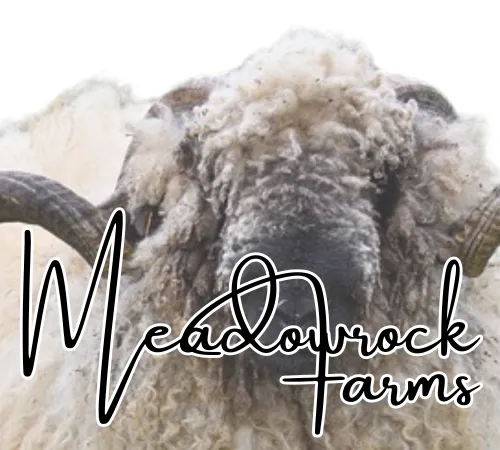Blog
Floral Inspirations – Expert Tips and Ideas
Welcome to our blog, where we share the latest floral trends, expert tips, DIY ideas, and inspiration for every occasion. Whether you're looking to brighten your home, plan an event, or learn more about flower care, our posts are filled with creative ideas and helpful advice to guide you every step of the way. Stay tuned for exciting updates and fresh floral ideas!

Elegance.
Serenity. Tranquility. Rejuvenation.

Sheep Farming for Beginners
Sheep Farming For Beginners
November 23, 2024
Meadowrock
Sheep farming’s a solid choice, especially if you’re diving into homesteading or starting a livestock journey. They’re the ultimate multipurpose animals, giving you wool, meat, and milk. Plus, they’re pretty chill and don’t demand the constant attention some other livestock need.
Speaking of chill, sheep farming can be a fantastic stress reliever and a way to connect with nature. Imagine relaxing in a meadow as your sheep graze contently. It’s like having a calming, fluffy therapy session.
Financially, sheep can be an exciting investment. They come with the potential to diversify income streams, from selling wool and milk to offering breeding services or meat. They’re not big eaters compared to cattle, so your feed costs might not skyrocket.
Sheep fit right in, too, if you’ve got yourself a mixed farm. They play nice with others, so combining them with crops or other livestock can boost your farm’s productivity. And hey, they’re great at lawn-mowing and naturally fertilizing your land!
Another highlight? Sheep farming’s a manageable step into the world of livestock for newbies. Their smaller size means they’re easier to handle. This way, you can get accustomed to livestock care without feeling overwhelmed, making them a great starting point.
Preparing Your Farm: Barn Setup and Pasture Management
Setting up a cozy home for your sheep is crucial in getting them settled and thriving. When it comes to the barn, think simple and functional. Sheep need protection from harsh weather and predators, but they don’t need a palace. Keep it clean, dry, and with good airflow to minimize health issues.
Now, onto the green stuff—pasture management. Sheep need plenty of room to roam and munch, keeping them healthy and wool-producing—or growing—for days. A lush pasture means happy sheep, providing enough fresh forage to keep them occupied and fed.
Rotational grazing is the way to go if you want to keep your pasture in top shape. This method lets different sections of your grazing land rest and recover, promoting regrowth and preventing overgrazing. It’s a win-win situation for your sheep and the land.
What about confinement? It’s doable, but it requires more labor and costs to provide enough quality feed and exercise for the sheep. While you may control their feed intake and care very directly this way, it can lead to health and behavior issues if not carefully managed.
Your farm’s climate and size will determine the specifics of how you set it all up. Just remember, providing access to water, shade, and shelter will keep your sheep comfortable and productive year-round. Their environment is everything, so tweaking it to your local conditions is key.
Veterinary Resources: Ensuring Healthy Flocks
Keeping your sheep in top-notch health is like a shepherd’s secret recipe for success. Knowing the common health issues that sheep face can give you a head start. Watch out for parasites, foot rot, and respiratory troubles, which can sneak up on any flock.
Routine checks and vaccinations are your best friends in this pasture. Vaccines protect your sheep from all sorts of nasty diseases more than just keeping them comfortable—they’re peace of mind. Regular hoof trimming and shearing also fall under the wellness banner, helping prevent problems before they start.
Finding a local vet who knows sheep is a lifesaver. Look for someone with a good reputation and experience in livestock. This expert not only helps with emergencies but also offers tips on nutrition and breeding.
Stocking a basic first-aid kit for your farm is a smart move. Think of essentials like antiseptics, bandages, and fly repellent. Having these on hand can be crucial when dealing with minor injuries or issues until the vet arrives.
Being part of the farming community pays off here. Fellow farmers can be valuable resources for tips and shared concerns about flock health. You’re not alone in this adventure, and learning from others can smooth the way.
Navigating Breeds: Choosing Between Wool or Hair Sheep
Picking the right breed for your farm can seem like choosing between cats and dogs. Wool sheep and hair sheep each bring their own perks to the table, and the choice depends on what fits your farm’s vibe.
Wool sheep are like mother nature’s cozy blanket makers. They grow thick, soft wool that—aside from keeping them warm—can end up in sweaters or quilts. If you’re interested in the textile market, breeds like Merino or Romney offer high-quality fleece. Just keep in mind that shearing is part of the package, requiring some skill and effort at least once a year.
On the flip side, hair sheep—like Katahdins or Dorpers—aren’t about that wooly life. They shed naturally, meaning less maintenance and no shearing headaches. They’re often valued for their meat, as they tend to have a leaner body and can thrive in various climates.
Consider your climate and market preferences—wool sheep usually fare better in cooler places, while hair sheep love basking in warmer climates. Plus, your choice might depend on whether you prefer dealing with textiles or focusing on meat production.
Each type brings challenges and rewards. Wool sheep might require a bit more work with the shearing and health checks, but they open doors into the wool market. Hair sheep keep things simpler but opt out of the textile world, going full-on into meat and milk.
In the end, it’s about matching the sheep’s traits to your farm’s goals. Whether you’re going fleece-focused or keeping it simple with hair sheep, there’s a perfect match waiting to join your farm family.
Practical Tips for Beginners: Starting and Managing Your Sheep Farm
Taking the plunge into sheep farming needs a solid plan and a dash of enthusiasm. First up, get a grip on your budget. Costs can sneak up fast, from buying the initial flock to setting up pastures and a barn. Calculating feed expenses and potential vet bills upfront saves headaches later.
With your budget sketched out, let’s focus on learning the ropes. Understanding the basic care for sheep, from feeding routines to essential health practices, ensures a smoother ride. There’s no substitute for hands-on experience, so shadow a seasoned farmer or take some courses.
Building connections with other farmers is your secret weapon. They offer insights and advice that textbooks just can’t match. Local agricultural extensions and online communities are great starting points to expand your network and gain practical tips.
Don’t overlook the importance of ongoing learning. The agricultural world, like the wool of your sheep, is ever-growing and changing. Stay updated with the latest farming methods and technologies. Attend workshops and farming fairs whenever possible—they’re a goldmine for knowledge and networking.
Lastly, be patient with yourself and your sheep. Mistakes are part of the journey, teaching you the nuances of farm life. Every shepherd started with their first flock, and your skills will grow as your experience does. Give yourself time to adapt, and remember, it’s all about the journey to mastering those bleats.
Emerse Yourself!
Get ready to embark on an unforgettable storytelling journey with The Wanderlust Letters! Our unique concept of sharing stories through personal correspondence between characters is a new way to experience powerful tales of love, intrigue, and adventure.


We are passionate about bringing the love of reading, romance and adventure to everyone. Thank you for choosing us for your reading pleasure.
Quick links
Services
© White Paper. 2025. All Rights Reserved.





